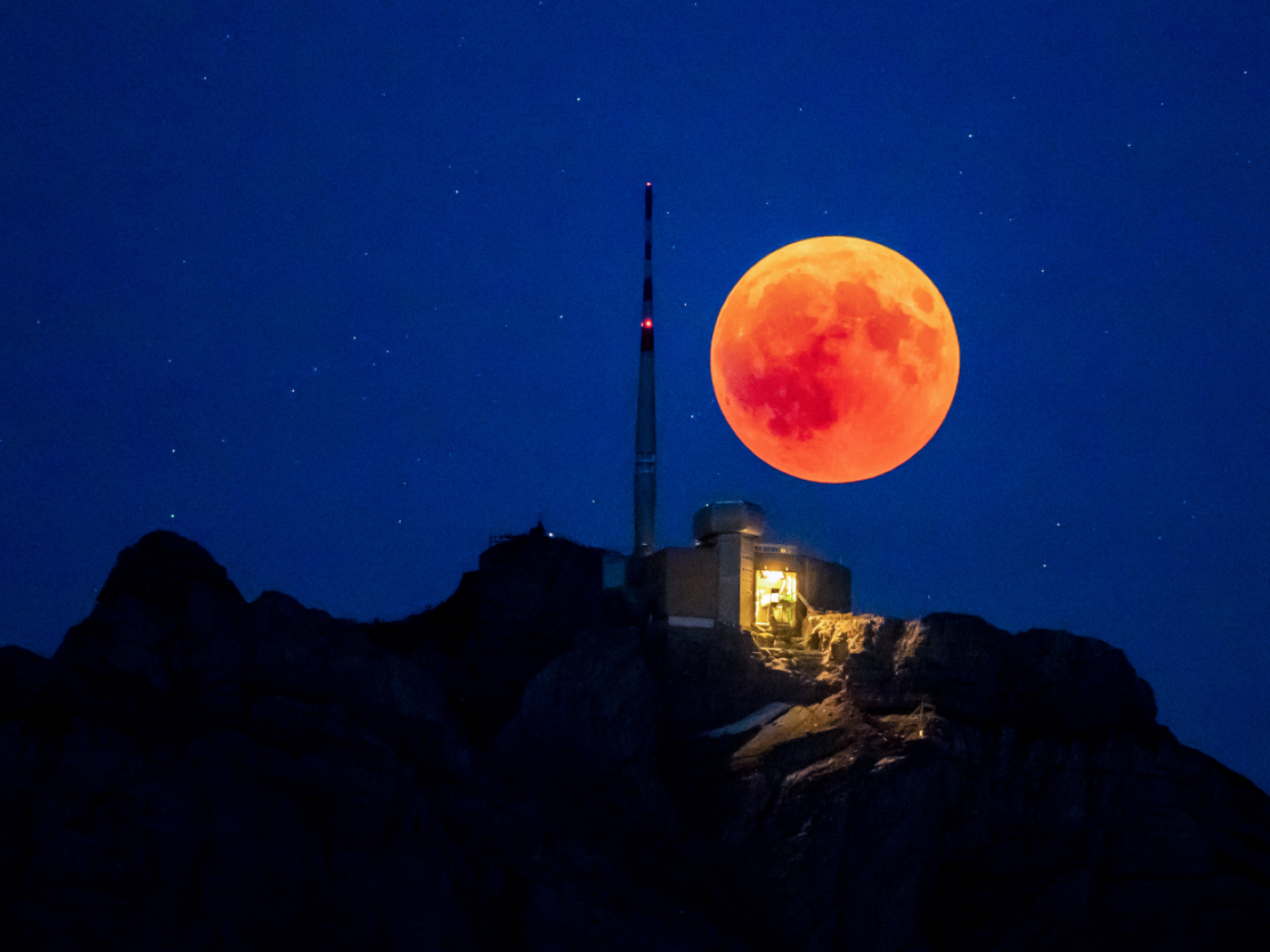
How to make the most of the lunar eclipse in Switzerland

On Sunday it will be possible to witness a lunar eclipse in Switzerland.
+Get the most important news from Switzerland in your inbox
The moon will move into the Earth’s shadow, taking on a coppery red hue.
The lunar eclipse will reach its climax at 8:11pm but will already be in progress before the moon rises. When the Moon appears on the horizon, between 7:46pm in Chur and 7:59pm in Geneva, it will already be completely in the Earth’s shadow.
At 8:52pm, the first rays of the sun will once again strike the Moon’s surface, which will then return to its usual brightness shortly before 10pm.
Unlike a solar eclipse, people don’t need protective glasses or any special equipment to observe a lunar eclipse. The celestial game of hide-and-seek can be followed with the naked eye.
To see the eclipse, people need to locate the Moon in the sky as it rises in the east.
Weather conditions will also be a determining factor. If the sky is very cloudy, there won’t be much to admire.
During the total eclipse phase, the Moon appears glowing red – a phenomenon is known as the ‘Blood Moon’.
The filtering of the Sun’s rays by the Earth’s atmosphere explains this bloody hue. Only the warmest colours in the light spectrum, those with the longest wavelengths, reach the Moon without being deflected by the atmosphere. Depending on the cloudiness of the atmosphere, the Moon can take on a colour ranging from dark red to light orange.
How does a lunar eclipse happen?
Unlike a solar eclipse, which only occurs during a new Moon phase, a lunar eclipse only occurs during a full Moon phase. At the time of the eclipse, the Earth comes between the Moon and the Sun. When the three celestial bodies are in exactly the same line, the Moon plunges into the Earth’s shadow and becomes darker.
This phenomenon is not that rare. Every year, there are at least two lunar eclipses around the world. There may even be as many as five a year.
Only a third of lunar eclipses are total eclipses. The next total lunar eclipse that can be seen from Switzerland will take place on December 31, 2028.
Translated from French with DeepL/mga
We select the most relevant news for an international audience and use automatic translation tools to translate them into English. A journalist then reviews the translation for clarity and accuracy before publication.
Providing you with automatically translated news gives us the time to write more in-depth articles. The news stories we select have been written and carefully fact-checked by an external editorial team from news agencies such as Bloomberg or Keystone.
If you have any questions about how we work, write to us at english@swissinfo.ch.

In compliance with the JTI standards
More: SWI swissinfo.ch certified by the Journalism Trust Initiative

















![The four-metre-long painting "Sonntag der Bergbauern" [Sunday of the Mountain Farmers, 1923-24/26] had to be removed by a crane from the German Chancellery in Berlin for the exhibition in Bern.](https://www.swissinfo.ch/content/wp-content/uploads/sites/13/2025/12/01_Pressebild_KirchnerxKirchner.jpg?ver=8f77363a)











You can find an overview of ongoing debates with our journalists here . Please join us!
If you want to start a conversation about a topic raised in this article or want to report factual errors, email us at english@swissinfo.ch.